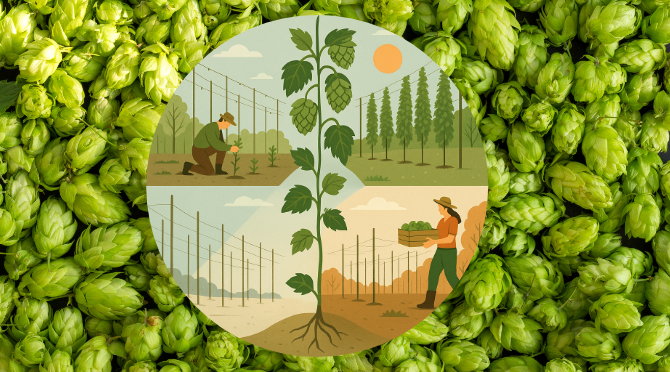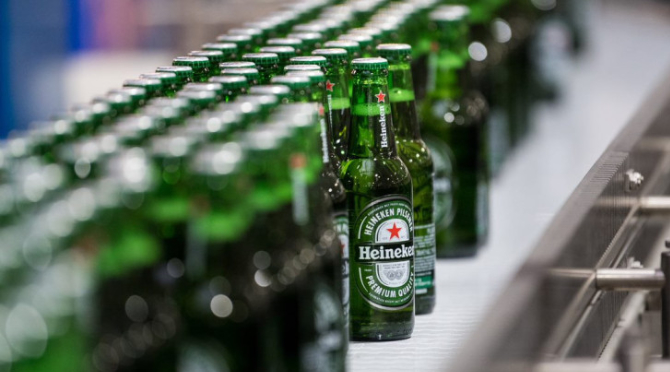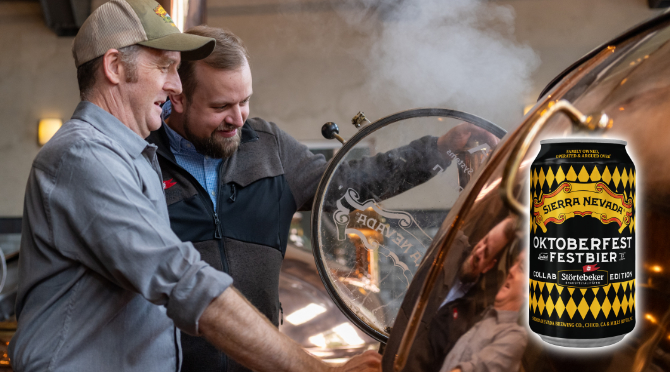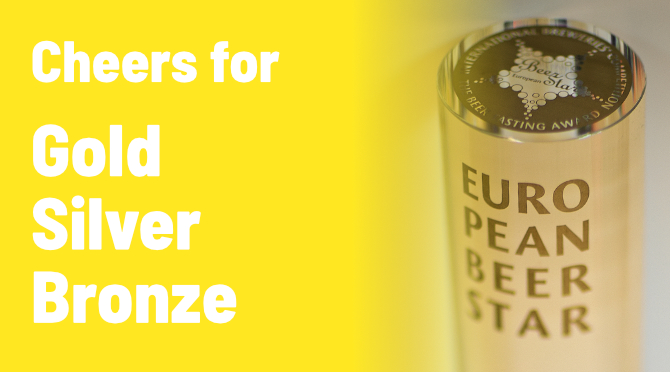
When people think of hops, they usually think of beer. Bitterness and bouquet. Aromatic diversity and a fine layer of foam. But before hops make their way into the brew kettle, they live a complex life – as a climbing plant, as a cone bearer, as a botanical marvel ruled by the feminine.
From Rootstock to Sky Seeker
Hops (Humulus lupulus) belong to the hemp family – and it shows. The plant grows with impressive endurance and tenacity – like a perennial, but with a stronger urge to climb. Under ideal conditions, a shoot can grow up to 30 centimeters in a single day. The shoots spiral clockwise upward, clinging to wires, trellises, or anything they can grab. Not to reach for the stars – but for the light. Photosynthesis, after all, is everything in the life of a plant.
Each hop plant grows from a perennial rootstock (rhizome), sending up fresh shoots every spring. What grows above ground is cut back at harvest time – or dies off naturally in the wild. What lives below stays put. And waits patiently for spring to return.
Two Cycles, One Goal: Reproduction
From a botanical perspective, hops go through two life phases: the vegetative cycle, in which the plant grows, forms leaves and branches – and the generative cycle, in which it produces flowers. And here’s where it gets interesting: not every hop plant is allowed to bloom, at least not in the world’s hop gardens.
Why? Because hops are dioecious – there are male and female plants. Only the females produce the precious cones filled with bitter-aromatic lupulin. The males? They’d only cause fertilization – and that’s exactly what growers want to avoid. Fertilized cones contain seeds, which do nothing good for aroma or brewing quality.
Female, Fierce, and Full of Value
That’s why commercial hop cultivation relies exclusively on female plants. Male hops are strictly forbidden – and if one sneaks in, it’s swiftly removed. Not plant discrimination, but quality control.
The female cones develop in midsummer. Inside their resin glands matures the golden treasure of hops – lupulin. It contains around 2,000 chemical compounds, many of which are known for their health benefits. But when it comes to brewing, only two groups really matter: bitter acids and essential oils. Together, they create a complex cocktail that adds flavor, stability, and character to beer. Depending on the variety, the aroma can be fruity, floral, spicy, or resinous.
A Cultural Plant through the Seasons
The life of a hop plant follows a clear seasonal rhythm: shoots emerge in March, growth peaks in June, flowering in July, harvest from late August to mid-September. Then comes a well-earned rest – at least underground. Everything above is cut back. That’s the way with perennials: they live from below.
Conclusion: More Than Just an Ingredient
Hops are not just a brewing crop – they are a living being with rhythm, resilience, and history. Their botany tells a story of survival, adaptation, and feminine finesse. Watch a hop grow, and you’ll realize: beer doesn’t start in the kettle – it starts in the field. Between wire and sky.
And with your next sip? Maybe take a quiet moment to thank the hop plant. Silently. Botanically.
Author: Birgit Rieber
Illustration: wegro communications



